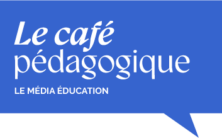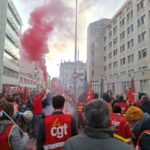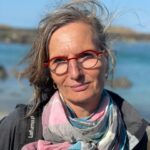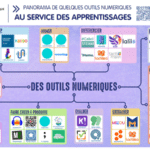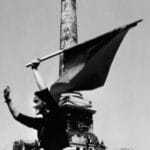la lettre Riverdeep’s Classroom Flyerdu 11 novembre nous propose ces sites où vous trouverez des leçons pour sensibiliser les élèves à l’art en explorant les oeuvres de certains artistes:
Drawing Trees with Emily Carr
Emily Carr was a famous Canadian artist, and elementary students can examine her works online and discuss her use of line and imagery. They will also create their own trees using bold, thin, thick, wavy, or straight lines, understanding how line can add to interpretation.
the lesson : http://www.kinderart.com/arthistory/emilycarr.shtml
her works : http://www.emilycarr.com/artcard.html and http://www.emilycarr.com/posters.html
Perspective with Georgia O’Keefe
Discussion questions will guide upper elementary students through a critique of Georgia O’Keefe’s « Sky Above Clouds IV », a painting with immense dimensions and overhead perspective. Students will create their own bird’s eye view sketches, paying attention to pattern, shapes, lines, and repeated color.
http://www.artic.edu/artaccess/AA_Modern/pages/MOD_FamAct3.shtml#
Themes with Kandinsky
Students will be invited to carefully explore the themes and objectives in the Kandinsky Composition 8. Paying particular attention to color, students will discuss the « inner character » of things as compared to outer appearances, with mention of non-objective composition, emotion, essence, shape, and line. They will then create their own non-objective paintings, given the criteria they have discussed in class.
http://www.artic.edu/artaccess/AA_Modern/pages/MOD_FamAct3.shtml#
Experimenting with Picasso
Pablo Picasso was certainly one of the most inventive artists of all time. Students will study Picasso’s work, in particular his « Woman with the Yellow Hair », and create their own continuous line profile drawing of a class member. They will then create a cut-up collage after exploring Picasso’s cubism techniques.
http://www.guggenheim.org/artscurriculum/lessons/collections_picasso.php
Discovering installation art with Kabakov
When Kabakov was creating art in Moscow during the 1970’s, only government-approved art was allowed. Because of these restrictions, Kabakov began an alternative art scene which developed in his apartment studio. His work evolved into installations, where he would create a habitat based upon a character, then add music, theater, poetry, sculpture, etc. Introduce your students to Kabakov’s art and stories
with the viewing discussion guide here, and then use the « Art Explorations » to help your students create their own environmental model installations, incorporating literature (characters), art, and social sciences.
http://www.guggenheim.org/artscurriculum/lessons/russian_enl.php?dispvar=9
http://www.guggenheim.org/artscurriculum/lessons/russian_L9.php

